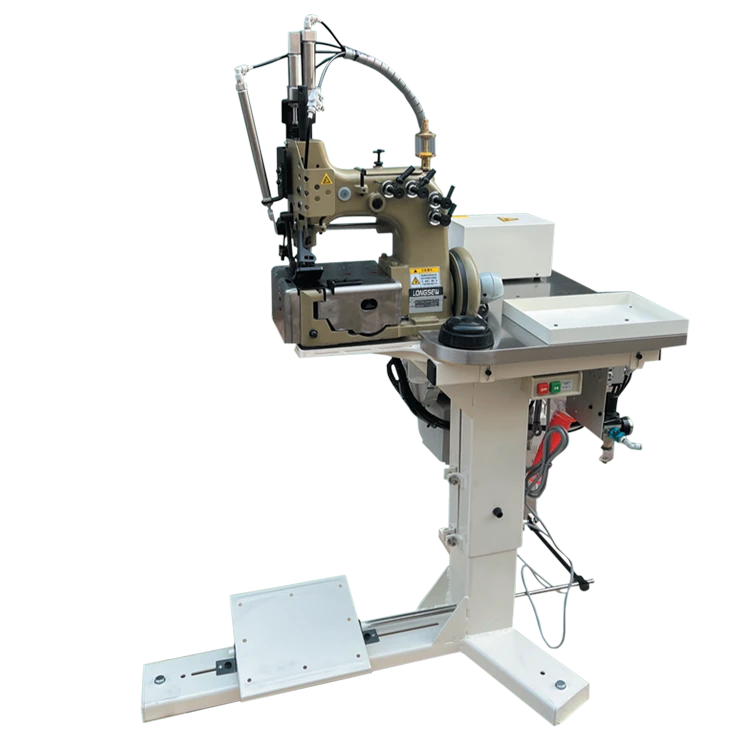Sewing Machine Leather Foot Attachment for Enhanced Stitching Performance
Understanding Leather Feet for Sewing Machines A Comprehensive Guide
Sewing machines have revolutionized the way we create textiles, enabling both hobbyists and professionals to produce high-quality finished products with precision and efficiency. Among the various attachments available for sewing machines, the leather foot stands out as an essential tool for those looking to work with leather and other heavy materials. This article will delve into the purpose of a leather foot, its types, how to use it, and tips for sewing leather effectively.
What is a Leather Foot?
A leather foot, often referred to as a walking foot or leather presser foot, is an accessory designed specifically for sewing leather and thick fabrics. Unlike standard presser feet, which may struggle with the thickness and texture of leather, a leather foot is engineered to provide better grip and control when sewing. This is crucial because leather requires a different approach compared to lighter fabrics, ensuring that it feeds evenly through the machine without slipping or bunching.
Types of Leather Feet
There are several types of leather feet available, each suited for particular sewing tasks
1. Walking Foot This type of leather foot has a mechanism that allows the presser foot to move in sync with the feed dogs, ensuring that multiple layers of leather are fed evenly. It’s ideal for quilting and sewing thick materials.
2. Teflon Foot Made from a non-stick material, the Teflon foot works well with leather because it glides smoothly over the surface, reducing the chances of sticking or tearing the material.
3. Roller Foot This foot features rollers that help guide the leather through the machine. It is particularly useful for sewing curves and intricate patterns without dragging the leather.
4. Leather Needle with Leather Foot While a leather foot is crucial, pairing it with a specialized leather needle significantly improves your sewing experience. Leather needles have a unique design that helps penetrate the tough leather without causing damage.
How to Use a Leather Foot
Using a leather foot is relatively straightforward but does require some adjustments to your sewing machine settings and technique
. Here’s a step-by-step guideleather foot for sewing machine

1. Install the Leather Foot Remove the standard presser foot and replace it with the leather foot by following your sewing machine's instructions.
2. Adjust Tension and Stitch Length Leather often requires a higher tension setting and a longer stitch length than regular fabric. Experiment to find the best settings for your specific project.
3. Choose the Right Needle and Thread Use a leather needle and a heavy-duty thread that can withstand the pressure of sewing through thick materials.
4. Test Your Setup Before beginning your main project, do a test run on a scrap piece of leather. This allows you to fine-tune your machine settings and ensures you get the desired results.
5. Sew with Care As you sew, guide the leather gently without forcing it. Let the machine do the work, and be wary of sharp turns or curves that may require slowing down to avoid mistakes.
Tips for Sewing Leather Effectively
1. Use a Cutting Mat When cutting leather, use a cutting mat to protect your surfaces and keep your blades sharp.
2. Avoid Pins Instead of pins, which can leave holes in leather, use clips or double-sided tape to hold pieces together.
3. Keep the edges clean Before sewing, trim any excess flesh or unwanted edges to ensure neat seams.
4. Condition Your Leather If your leather feels dry, consider applying a leather conditioner before sewing to keep it supple and easier to handle.
5. Finish with Care After sewing, use edge finishing tools to smooth out the seams and provide a professional finish to your leather project.
In conclusion, using a leather foot for your sewing machine opens up a world of possibilities for crafting beautiful leather goods. Whether you're making bags, wallets, or garments, understanding the nuances of sewing leather will help you achieve professional results. With the right tools and techniques at your disposal, you can take your sewing projects to the next level. Happy sewing!
-
Boost Production Efficiency with a Pattern Sewing MachineNewsAug.29,2025
-
Industrial Excellence with the Best Heavy Duty Sewing MachineNewsAug.29,2025
-
Precision and Power with the Best Pattern Sewing MachineNewsAug.29,2025
-
Reliable Bulk Packaging Starts With the Right FIBC Sewing MachineNewsAug.29,2025
-
Advanced Packaging Solutions: Elevate Productivity with Jumbo Bag Sewing Machine and Industrial Stitching EquipmentNewsAug.29,2025
-
High-Performance Solutions for Bulk Packaging: FIBC Sewing Machine and MoreNewsAug.29,2025
-
Maximize Efficiency with an Industrial Cylinder Arm Sewing MachineNewsAug.28,2025


























